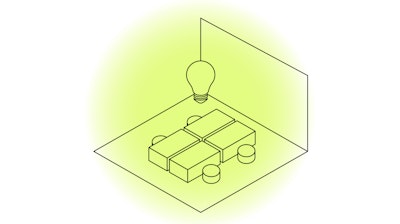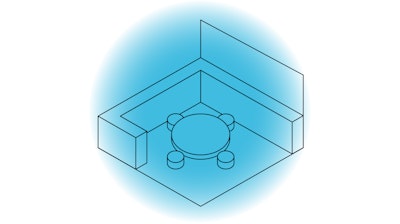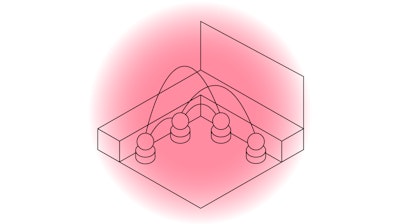5 ways to improve teamwork in healthcare
How healthcare settings designed to enable communication can improve clinician teamwork—and save lives
Oct 12, 2023
3 minutes
Nurses, doctors, and clinical teams should be set up for success with workspaces designed to encourage communication, continuous learning, and teamwork. Improved connectedness can save lives.
Communication is essential for every successful team. It's especially critical for clinical care teams, in which a quick conversation—or a simple misunderstanding—can mean the difference between life and death.
This isn’t hyperbole. Medical errors are the third-leading cause of death in the United States*, and 80% of “adverse events” (i.e., mistakes) are related to miscommunications among healthcare professionals.**
Simply put, to reduce errors and save lives, we must help care teams communicate. Here's how to do it.
Medical errors are the third-leading cause of death in the United States.

Include a variety of settings
From confidential discussions to full-team updates to casual conversations, nurses, doctors, and other team members convey important information to one another in many ways over the course of a shift. Whatever the interaction, including a variety of settings across the care team environment enables a diversity of communication styles—and increases worker satisfaction by 31.8%.***

Increase conversational transparency
Giving clinicians visual and auditory access across the team environment—the ability to see,
hear, and even overhear each other—helps them engage in critical types of communication.
These include intervening to correct a mistake or offering assistance to solve a problem.
Care teams with visual and auditory access are more likely to:
Offer support to their peers.
Share knowledge informally in conversation.
Provide feedback.
Trust their teammates.
One study revealed that a startling 56% of all staff interactions are unplanned.

Facilitate chance encounters
Important communication doesn't just happen in meetings. Nurses and doctors will tell you that some of the most valuable exchanges (e.g., critical patient updates, new test results) can occur while simply passing a teammate in the hallway.
In fact, one study revealed that a startling 56% of all staff interactions are unplanned.**** Design must make room for these unplanned, casual conversations in corridors and other shared spaces.

Plan for human-scaled work areas
It's difficult to give care teams the right amount of space. But human-scaled environments that
put staff in relatively close proximity to one another can help them:
Be more efficient.
Increase informal learning through unplanned conversations.
Reduce the feeling that they're wasting time.
When people from different disciplines work side by side, communication and team cohesion improve across the board.

Create neutral zones
The era of closed-door private offices is fading fast. And for good reason. When people from different disciplines work side by side, communication and team cohesion improve across the board. It also helps break down perceived hierarchies between groups and functions, enabling cross-functional engagement and knowledge-sharing.
Nurses, doctors, and specialists who work together in the same space feel more comfortable sharing their opinions with each other—or starting a potentially life-saving conversation.
Sources
*Makary, Martin A., Daniel, Michael, "Medical Error-the Third Leading Cause of Death in the US," BMJ 2016;353:i2139
**The Joint Commission, "Human Factors Analysis in Patient Safety Systems," The Source, Volume 13, April, 2015
***Leesman, "The World's Best Workplaces 2018," Second Edition, May, 2019
****Mejla, D., Favela, J., Moran, A., "Understanding and Supporting Lightweight Communication in Hospital Work," IEEE Transactions on Information Technology in Biomedicine 14(1), 140-146, 2009 https://dx.doi.org/10.1109/titb.2009.2033384
3-point recap
Workspaces designed to encourage interactions among staff help facilitate life-saving communication across healthcare facilities.
A variety of settings provides places for all forms of necessary staff interactions, from full-team updates to casual conversations.
Shared spaces allow for chance encounters and casual conversations, which are critical for clinicians to correct a mistake or solve a problem.
We’re here to help
If you need help getting started, reach out to our team of healthcare specialists.